Mary Queen of Scots (R) ★★½
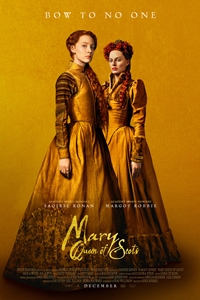 Mary Queen of Scots is the latest motion picture to plunder the fractious history between England and Scotland during the middle centuries of the previous millennium. Although transpiring some 250 years after the events depicted in Outlaw King, Mary Queen of Scots illustrates that not much had changed in terms of trust and amity between the two neighboring nations. With events that overlap those related in Cate Blanchett's second outing as Queen Elizabeth, Elizabeth: The Golden Age, this movie focuses on Mary's six-year reign with an epilogue detailing her date with a headsman's ax. (This moment bookends the film, opening and closing it.)
Mary Queen of Scots is the latest motion picture to plunder the fractious history between England and Scotland during the middle centuries of the previous millennium. Although transpiring some 250 years after the events depicted in Outlaw King, Mary Queen of Scots illustrates that not much had changed in terms of trust and amity between the two neighboring nations. With events that overlap those related in Cate Blanchett's second outing as Queen Elizabeth, Elizabeth: The Golden Age, this movie focuses on Mary's six-year reign with an epilogue detailing her date with a headsman's ax. (This moment bookends the film, opening and closing it.)
Historically, the movie is faithful in broad strokes to the established record, although its reliance on disputed elements of John Guy's biography puts it at odds with some traditional accounts. The film's biggest problem is its uneven pacing. The first half is slow with a decidedly uncinematic obsession with rites and rules of succession. Some of this is necessary to understand the positions of Mary Stuart (Saoirse Ronan) in Scotland and her cousin, Elizabeth I (Margot Robbie), to the south. However, there's only so much of this that can be conveyed in a movie without losing the audience and Mary Queen of Scots' attempts potentially create more confusion than clarity.
Things improve during the second half - in large part because of the uptick in both political intrigue and battles. Mary is twice betrayed and there's an especially grotesque murder in her private chambers - an indication that, although she might be a ruler, she is by no means untouchable. The film makes another misstep late in the proceedings when it switches the viewpoint from Mary to Elizabeth. For most of the running time, the latter character is a supporting figure, presented fleetingly and developed ineffectively. Then, following an odd scene in which the two figures meet face-to-face amidst a flotilla of hanging laundry, Elizabeth becomes the principal. It's an anti-climactic and ultimately unsatisfying way to end the film. The concluding crawl says nothing about how Mary's grandson would become the central figure in the English Civil War and would (like his grandmother) lose his head.
Saoirse Ronan's performance is fine but her character never comes alive. There's little charisma or immediacy in this interpretation of Mary and many of her positions on social and religious issues seem too progressive for the late 16th century. (She's pro-gay rights and in favor of women enjoying oral sex - I'm not sure either was likely in a Puritanical era, even if Mary was Catholic.) In order to further lionize Mary, all of her enemies are turned into fanatical villains - take Protestant firebrand John Knox (David Tennant), for example. He's so overplayed that he reminded me of the unwashed, bearded guy often seen at the beginning of Monty Python's Flying Circus (sometimes referred to as the "It's…man"). I'm not sure that's an association director Josie Rourke or actor David Tennant would be happy with.
For those with a particular interest in this era of history, Mary Queen of Scots is a respectable venture. It has plenty of flaws but the production design is solid and there's a Games of Throne-ish quality to some of what happens during the second half. Unlike Braveheart, however, this movie fails to generate the kind of gripping, compulsively watchable melodrama and adventure that allowed Mel Gibson's film to succeed with audiences and at the Oscars. Some might argue that the low-key approach favored by Rourke strikes a more appropriate tone but the lack of energy is occasionally numbing. At one time, Focus Features was touting Mary Queen of Scots as an awards' contender. That talk has quieted because, although the film is competently made, there's nothing here worth more than a cursory art-house release in advance of home video purgatory.
© 2018 James Berardinelli
To get the full Quicklook Films experience, uncheck "Enable on this Site" from Adblock Plus
box office top 10
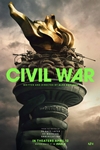
Civil War Released: April 12, 2024 Cast: Kirsten Dunst, Wagner Moura 11.1M
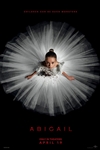
Abigail Released: April 19, 2024 Cast: Melissa Barrera, Dan Stevens 10.2M

Godzilla x Kong: The New Empire Released: March 29, 2024 Cast: Rebecca Hall, Brian Tyree Henry 9.5M

The Ministry of Ungentlemanly Warfare Released: April 19, 2024 Cast: Henry Cavill, Eiza Gonzalez 9M

Spy x Family Code: White Released: April 19, 2024 Cast: Takuya Eguchi, Saori Hayami 4.9M

Kung Fu Panda 4 Released: March 8, 2024 Cast: Jack Black, Viola Davis 4.6M

Ghostbusters: Frozen Empire Released: March 22, 2024 Cast: Paul Rudd, Carrie Coon 4.4M

Dune: Part Two Released: March 1, 2024 Cast: Timothée Chalamet, Rebecca Ferguson 2.9M
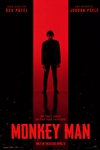
Monkey Man Released: April 5, 2024 Cast: Dev Patel, Sikandar Kher 2.2M
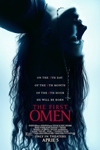
The First Omen Released: April 5, 2024 Cast: Nell Tiger Free, Bill Nighy 1.7M






